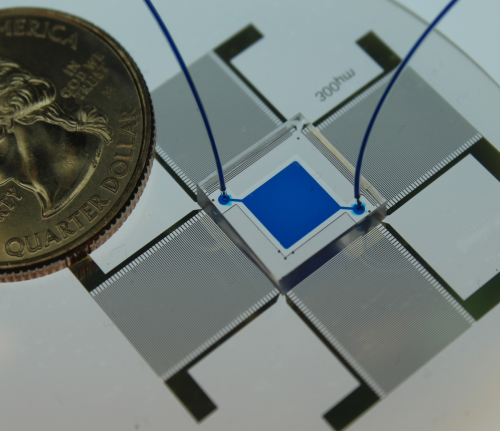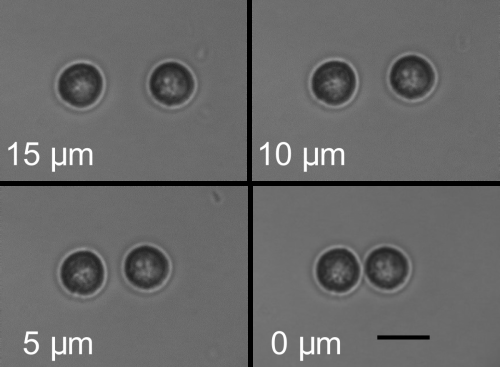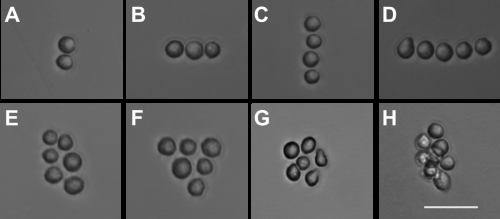Acoustic tweezers manipulate cell-to-cell contact

Sound waves can precisely position groups of cells for study without the danger of changing or damaging the cells, according to a team of Penn State researchers who are using surface acoustic waves to manipulate cell spacing and contact.
"Optical tweezers are the gold-standard technique in the field," said Tony Jun Huang, professor of engineering science and mechanics. "They can trap two cells in place, but because of their high power they tends to affect the integrity of cells, and sometimes damage them.
Acoustic tweezers use the same low-power acoustic waves as those used in existing ultrasound machines, so they are gentle and can preserve cell integrity.
The researchers are manipulating cells so that they can look at direct contact between two cell membranes or precisely control and maintain a variety of distances between cells and determine how cells communicate.
"The value of acoustic tweezers for studying cell-to-cell information transfer is their ability to separate the cells to a precise distance or to bring them to a predetermined contact," said Stephen J. Benkovic, Evan Pugh Professor and Eberly Chair in Chemistry. "Optical tweezers can do this to some extent but suffer from heating of the sample."
The acoustic tweezers device that the researchers envision is no larger than a cell phone and can achieve a throughput of thousands of cells. By altering the acoustic field, the cells can be precisely manipulated without damage. Because the acoustic tweezers operate in a vertical channel that holds the cell-containing liquid, the researchers can trap the cells in suspension or allow them to settle onto the surface of the substrate.

The researchers place four acoustic sources on opposite sides of the substrate. When opposing devices send out surface acoustic waves, they set up a grid of nodes where the sound pressure cancels out. Cells become trapped at those nodes. By modulating the power and frequencies of the acoustic sources, the researchers can manipulate the number of cells and also their position. Two cells can be moved to touch each other or to almost touch each other with a variety of separation distances.
The cells can also be positioned in patterns including lines of multiple cells, daisy-like clumps of cells or even triangles of cells.
"With present technologies, the generation of a desired cell-to-cell contact is often random or limited in number," said Benkovic. "With standing acoustic waves, precise positioning of cells can be achieved on a multi-cellular level so that planned patterns of cellular arrays can be achieved.

"One can imagine a study of a cell's infection by a bacterium as well as the creation of a long cellular assembly, for example the formation of a nerve from neurons."
Because the acoustic tweezers can be created on a substrate that is transparent, the researchers can use microscopes to view the resulting cell alignments. Huang, Benkovic and colleagues put fluorescent dye into one of a pair of almost touching cells and watched the dye move into the neighboring cell through tiny protein channels established between them, demonstrating how chemical communication might be tracked using this device.
More information: Controlling cell–cell interactions using surface acoustic waves, PNAS, www.pnas.org/cgi/doi/10.1073/pnas.1422068112
Journal information: Proceedings of the National Academy of Sciences
Provided by Pennsylvania State University




















